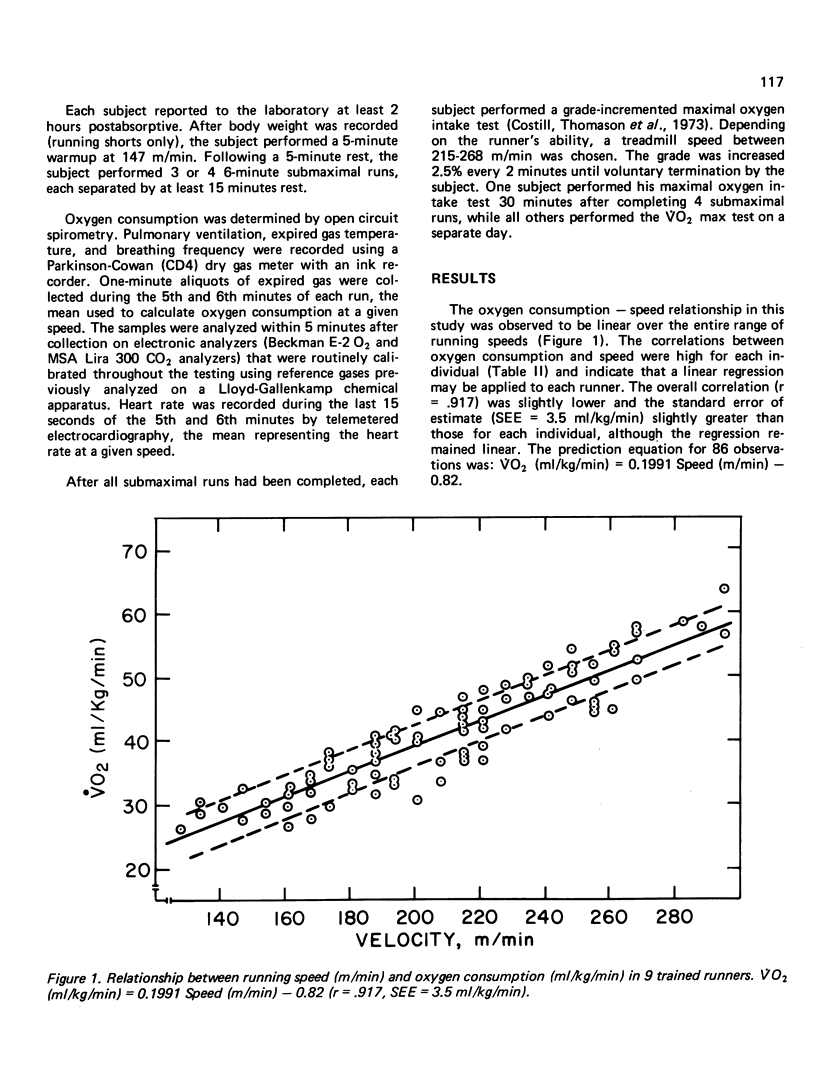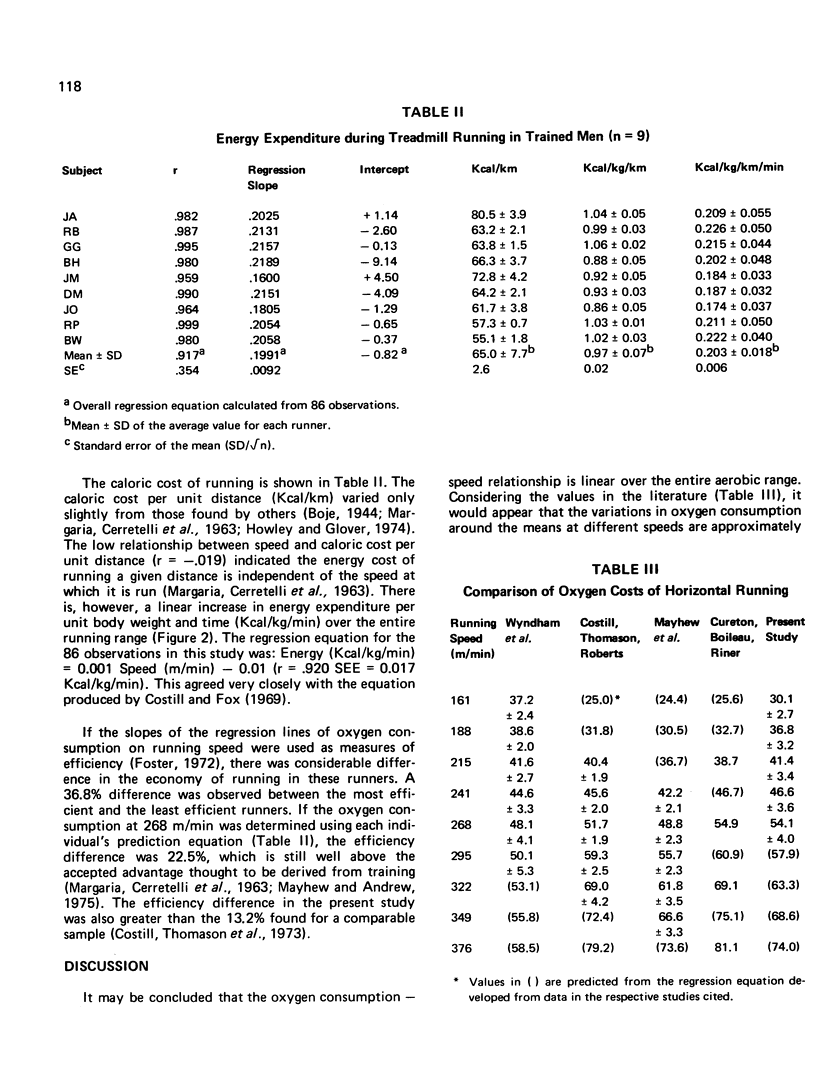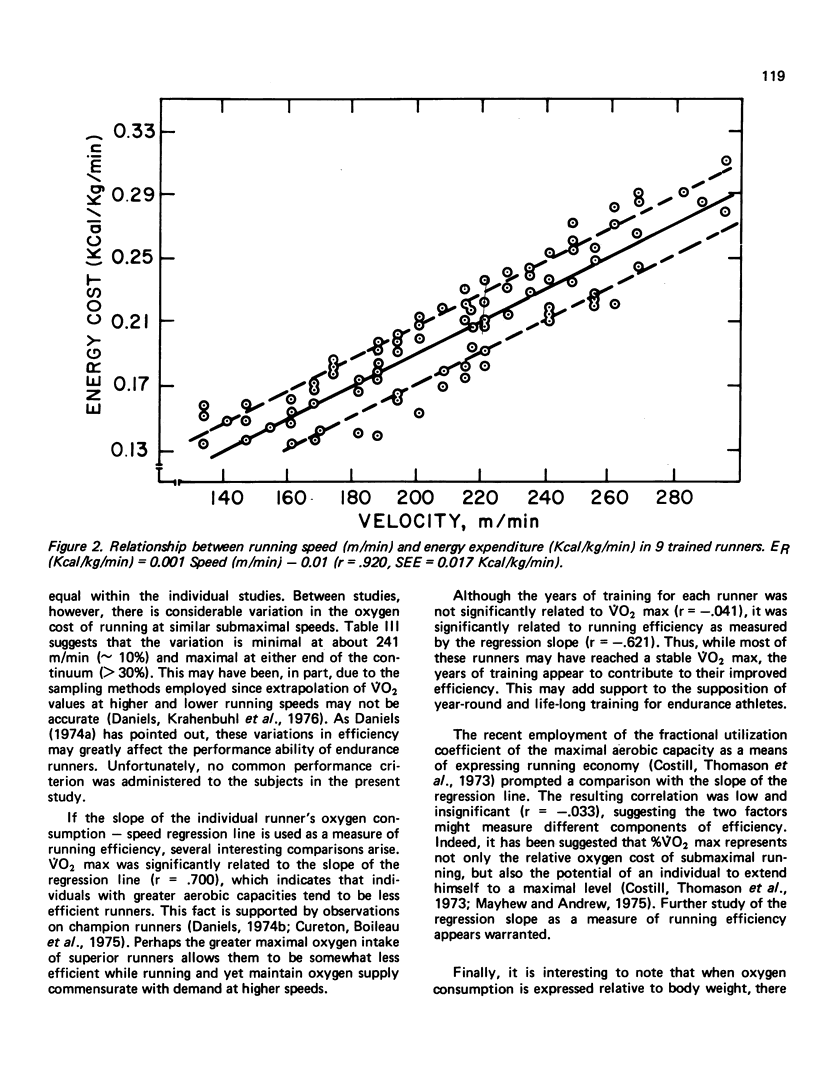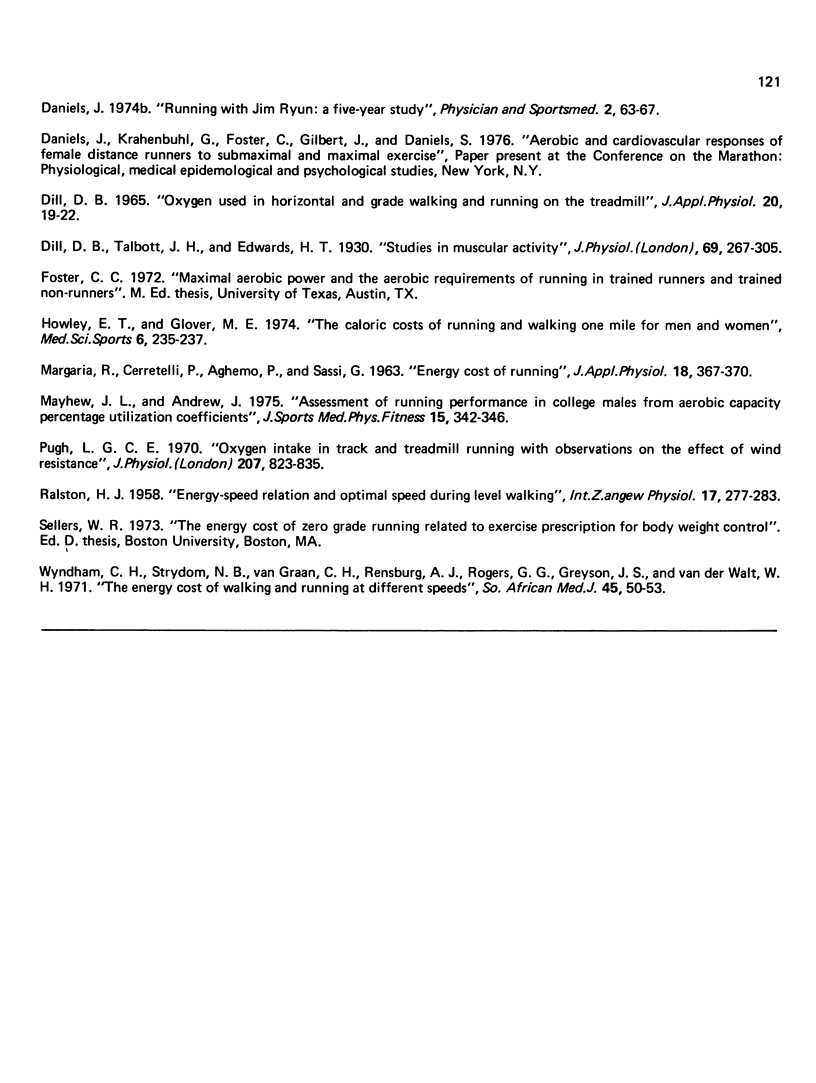Abstract
The oxygen cost and energy expenditure of submaximal treadmill running was evaluated in 9 male distance runners. The oxygen consumption--running speed relationship was highly significant (r = .917) and linear over the entire aerobic range. The caloric cost of 0.97 Kcal/kg/k was in close agreement with values found in the literature and was independent of running speed. The caloric cost per unit distance and time increased with acceleration in running speed. The slope of the regression line of oxygen consumption on running speed appear to measure a different component of efficiency than the fractional utilization coefficient of aerobic capacity. There is apparently a wide variation in the oxygen cost of running in trained runners.
Full text
PDF





Selected References
These references are in PubMed. This may not be the complete list of references from this article.
- Costill D. L., Thomason H., Roberts E. Fractional utilization of the aerobic capacity during distance running. Med Sci Sports. 1973 Winter;5(4):248–252. [PubMed] [Google Scholar]
- DILL D. B. OXYGEN USED IN HORIZONTAL AND GRADE WALKING AND RUNNING ON THE TREADMILL. J Appl Physiol. 1965 Jan;20:19–22. doi: 10.1152/jappl.1965.20.1.19. [DOI] [PubMed] [Google Scholar]
- Daniels J. Physiological characteristics of champion male athletes. Res Q. 1974 Dec;45(4):342–348. [PubMed] [Google Scholar]
- Dill D. B., Talbott J. H., Edwards H. T. Studies in muscular activity: VI. Response of several individuals to a fixed task. J Physiol. 1930 May 31;69(3):267–305. doi: 10.1113/jphysiol.1930.sp002649. [DOI] [PMC free article] [PubMed] [Google Scholar]
- Howley E. T., Glover M. E. The caloric costs of running and walking one mile for men and women. Med Sci Sports. 1974 Winter;6(4):235–237. [PubMed] [Google Scholar]
- MARGARIA R., CERRETELLI P., AGHEMO P., SASSI G. Energy cost of running. J Appl Physiol. 1963 Mar;18:367–370. doi: 10.1152/jappl.1963.18.2.367. [DOI] [PubMed] [Google Scholar]
- Mayhew J. L., Andrew J. Assessment of running performance in college males from aerobic capacity percentage utilization coefficients. J Sports Med Phys Fitness. 1975 Dec;15(4):342–346. [PubMed] [Google Scholar]
- Pugh L. G. Oxygen intake in track and treadmill running with observations on the effect of air resistance. J Physiol. 1970 May;207(3):823–835. doi: 10.1113/jphysiol.1970.sp009097. [DOI] [PMC free article] [PubMed] [Google Scholar]
- RALSTON H. J. Energy-speed relation and optimal speed during level walking. Int Z Angew Physiol. 1958;17(4):277–283. doi: 10.1007/BF00698754. [DOI] [PubMed] [Google Scholar]
- Wyndham C. H., Strydom N. B., van Graan C. H., van Rensburg A. J., Rogers G. G., Greyson J. S., van der Walt W. H. Walk or jog for health. I. The energy costs of walking or running at different speeds. S Afr Med J. 1971 Jan 16;45(3):50–53. [PubMed] [Google Scholar]


